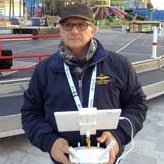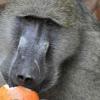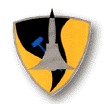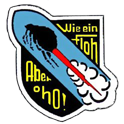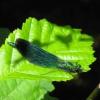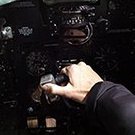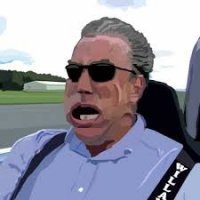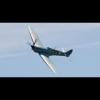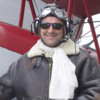Search the Community
Showing results for tags 'beaufort'.
-
I shall be joining with an Odessa Toy Factory boxing of the Beaufort. It is moulded in lovely blue plastic, the decals look average and I may have to dig into the spares to mark it up. There was also a set of resin engines in the box so I shall use these. It will be built as a RAAF example, the decals supplied for the RAAF machine are for 93SQN's A9-408. There does not seem to be an entry in the kit list thread for this one.
- 28 replies
-
- 10
-

-
Good morning everyone For this beautiful first GB 2024, I chose an English plane that I love very much: an Airfix Bristol Beaufighter Mk.I. At the moment, my only aftermarket set to use is a CMK cockpit... later we'll see what I can add........Happy GB everyone Ettore 🍡
-
Hi everyone, I did not really have any plan to enter this GB, although I did put my name down for it under extreme coercion. Then I realized that one of the two kits I had planned for the Frog GB would fit nicely in this Twins Mega GB! So here I am with the Frog antediluvian Beaufort Mk I, re-boxed by Encore as a Mk. VIII. Needless to say that there is no way this Beaufort can easily be made to look like an Aussie Mk. VIII. Encore did simply add some PE fuselage antennas and a decent decal sheet for a few RAAF Beaufort. But no mention of the larger vertical surface and the host of other differences. So I will quietly stick to a Mk. I, built mostly OOB. Not much happening on the inside with this kit: I have a Eduard IP I will add, with some safety belts and the navigator table and swivel chair in the nose, to try and get rid of the cavernous look. Oh, and did I mention that there is a lot of flash?! I am infatuated with the Beaufort, so it is now or never. Some photos will appear a bit later. Cheers JR
- 66 replies
-
- 16
-

-
- Encore ex-Frog
- Beaufort
-
(and 1 more)
Tagged with:
-
Hi Comrades! Here is my take on excellent Airfix Bristol Beaufort torpedo-bomber. Built OOB with addition of Eduard brass. Thanks for looking.
-
RAF Bomber & Torpedo Pilots 1939-45 (48090) 1:48 ICM via H G Hannants Ltd During WWII the RAF were tasked with maritime interdiction and harassment missions to disrupt and sink German shipping, and to protect the Allied shipping whenever possible. The crews often flew older aircraft such as the Beaufort that could carry torpedoes, flying straight and low at their targets in a valiant attempt to launch their torpedoes with a chance of hitting the target, evading incoming fire from the target, additional craft in the vicinity, and other enemy aircraft when in coastal waters. These brave men and boys took immense risks to carry out their missions, and many didn’t make it home, fighting for the existence of their way of life. This set has been sculpted to coincide with the recent launch of ICM’s own Beaufort, and arrives in a medium-sized, top-opening box with ICM’s trademark captive flap on the lower tray. There is a single sprue in grey styrene and an instruction sheet within, containing parts for five figures, consisting of three aircrew and two mechanics. As usual with ICM figures, the sculpting is first-rate, and parts breakdown as well as seamlines are sensibly placed to ease clean-up and construction. The aircrew are all wearing WWII period RAF blue uniforms with leather flying jackets and two are wearing Mae West life jackets over the top. The captain is wearing a flat-topped cap and carrying what looks like a log-book in his right hand, while his left hand rests in his jacket pocket. The other two crew are walking with their hands to their sides, carrying a parachute pack or leather flight helmet in one hand, and the parachute carrier is also still wearing his harness. The ’erks are wearing dark blue overalls, one in long boots is standing with his hands about to rest on what is shown to be a torpedo on the box art, while the other gentleman in short boots is kneeling down, ministering to a trolley wheel on the box. Both their overalls have the word “TORP” written on the panel on their blacks, with a white square below left, denoting their specialisation, presumably so they can be tasked with jobs appropriate to their skillsets from a distance. As usual with ICM figure sets, the instructions include drawings in full colour that have the part numbers and colour codes called out in black text and red boxed text respectively, the latter cross-referring to the paint table on the opposite side of the sheet, which gives colour codes for ICM’s paint system as well as colour names in Ukrainian and English printed over a swatch of the colour itself. There is also an ICM paint set for RAF Pilots numbered #3033 that is available from Hannants here if you’re in the market. I’ll try to remember to cross-link the reviews when we’ve done the paint set. Conclusion Another quality figure set from ICM that is also pocket-friendly in this era of high inflation. Five figures with excellent sculpting that will mesh well with the recent crop of torpedo bombers that have been released in this scale. Very highly recommended. Available in the UK from importers H G Hannants Ltd. Review sample courtesy of
-
Hello, I wonder if someone could help me with the colour of a black underside painted Beaufort's wheel wells, bomb bay and flaps. They would have to be black, right? Airfix says interior grey-green. Thanks, Alex
-
Which would be great... but..... and yes, i know that we frequently have spats and bunfights over colours, and I can't really see the colours just in the bottles, and the following is meant as a discussion/query rather than a dummy spitting rant, though I am rather put out in general with acrylic attempts at RAF paint... but aspect of this concern me..... so I hope the following will explain further Chocolate? Extra Dark Green? Blue Grey? Dark Grey? Looking at the paint guide, they are intended to represent Dark Earth (which is a greeny brown), Dark Green(a dark olive green) and Sky (which is a very pale yellow green, but not blue or grey) which set alarm bells ringing. I don't really care if they call them Barbie pink and unicorn Purple, if they represent the actual colours well, but just the names alone worry me....I mean, this is hardly an obscure subject.... and FWIW, the colours shown on the image below from the instructions are to my eye and screen, 'close enough' for a reasonable idea and this 1941 Life magazine image shows the colours well, note also the markings, sky, grass, uniforms, faces look 'right' Spitfire in England by Etienne du Plessis, on Flickr But the point is that we have gone backward with RAF model paint in acrylic..... I have several brands, naively thinking as these are well known and well documented colours.... it was only after finding a model when painted looked wrong (still awaiting stripping) I really started digging, comparing brush out to the RAF museum book chips. Xtracrylix are usually rated, I found all the major RAF ones 'off', AK Interactive, same Tamiya's claimed RAF colours, XF81/82/83 were also off, I got some Lifecolour, also way off. I was sent a sample of Hataka Dark Earth/ Dark Green/Sky, also off. I'd not trust Vallejo's stated matches for anything these days, though with such a wide range near matches are to be found by trial and error, we had a mega thread on what serious miss the MigAmmo colours were.... https://www.britmodeller.com/forums/index.php?/topic/235078859-accuracy-of-ammo-by-mig-jiménez-raf-wwii-colours/ At this stage I'm not about to waste any more money or time trusting model paint sets without some trusted confirmation... Note, for any of those rolling their eyes, and 'there was a war on' and the like ideas, the post in the direct link here https://www.britmodeller.com/forums/index.php?/topic/235078859-accuracy-of-ammo-by-mig-jiménez-raf-wwii-colours/page/3/#elControls_4045174_menu which I'm going to quote for it's clarity, Is one of the most illuminating I have read on here on wartime colours, courtesy of @Jamie @ Sovereign Hobbies who runs a paint company, and has made up samples from wartime paint formula, so is not talking out of his hat. I'm going to point out some facts about real-life paint manufacture and either the reader will understand and "get it" or will not understand and are in no position to contradict me. 1) Usually camouflage colours are fairly low saturation colours because these blend in better with nature. They're seldom bright and bold. Low saturation colours are normally manufactured by adding coloured pigments to a base made from inexpensive white or white and black pigments. 2) Colour pigments are expensive. The expense varies depending on the specific pigment, but they're expensive. 3) The only way to over-saturate a colour so much is to substantially over-dose your base with the expensive colour pigments. I'm not talking about a few percent more or less - that causes minor differences which you only confirm the presence of with one swatch adjacent to another - I'm talking more in the order of a double dose to get something you obviously look at and think "woah". 4) In the case of colours like dark olive, these are mostly white, black and ochre (which is relatively inexpensive for a colour pigment) sometimes further tinted with a bit of red or green (which are often very expensive). 5) There can certainly be variances in a manufactured paint, but these tend to be greatly overstated, i.e. used as a ready made excuse for all sorts of mistakes. Ultimately, the only way a manufactured paint can end up so oversaturated is to have dumped in a vast amount of the expensive pigments, if not adding in new additional pigments in large quantities not expected in the recipe. Frankly, it's difficult to see how any manufactured paint could end up so drastically off target, particularly in the over-saturated sense, by any business that wasn't actively trying to bankrupt itself by roasting through obscene quantities of pigments like chrome green which were already expensive at the start of the war and in particularly short supply during. 6) I'd venture that most of the "there was a war on, you know" type apologists for such spectacular errors probably don't have any actual experience of what is and isn't possible when mixing different proportions of 2,3 or 4 pigments when 2 of those are usually black and white just to make your base to tint. You simply cannot end up with a Humbrol 30-esque bluish green using only the ingredients to make olive - i.e. you'd actually have to sabotage it by introducing if not blue then an obviously bluish green. Same goes for that bright green Spitfire above - you can't achieve that with black, white, ochre and a touch of red - you'd need to fire in a lot of bright green pigment in to get that saturated on an overly-light base. It would be more tan-like just using the basic olive green ingredients which only turns obviously olive when tinted enough with black. Put another way, with a fixed number of pigments in various ratios you WILL end up somewhere within a certain envelope, and usually when colours like this bright green are discussed it's because it's well outside that envelope. The point of all the above? In essence it's harder to make a credible explanation for how such a colour might have been arrived at in a real-life paint manufacturing environment than it is to demonstrate that someone would have had to go to a lot of trouble to get it so far wrong. That is harder to rationalise than just getting it closer to correct. Just to clarify, I have good colour vision, and the paints I mention above are frequently not even close, common problems are beigey or chocolaty Dark Earth (no green) and muddy Sky (browny tint) for example, along with blueish Ocean Grey (it's a slightly green hued grey) , muddy or yellowy Medium Sea Grey (it very subtly purple hued grey) being some of the main failings I found... I know this as I spent a long time doing mixes and comparing them to the chips. in the case of the Beaufort, they were Temperate Land Scheme, as in pic above, Dark Earth/ Dark Green/Sky, or Temperate Sea Scheme, Dark Slate Grey(a grey green)/Extra Dark Sea Grey over Sky, or in the case of MW-R, black undersides So.... what are the scheme and colours they are intending in the set? charitably it's Temperate Land Scheme with some grey? which is for what? Or are they using the same green for Dark Green and Dark Slate Grey? Any chance of some images of the spray out ? Do you have any standards to compare any of these too? Just something that would allow some idea of the colours in the set. I hope ICM have made decent job of the colours, as the actual paint sounds decent, though the names picked imply them using 'near matches' from their paint range, which never bodes well. Hope of interest to the subject under discussion and not too ranty, and I have explained my concerns reasonably and clearly?
-
WWII Royal Air Force Acrylic Paint Set (3018) ICM via Hannants ICM have fairly recently released their own brand of acrylic paints on the market, and are creating some kit specific sets to go with their major releases, of which this is one. The set arrives in a cardboard box with six screw-capped bottles inside, each containing 12ml of paint. The bottles are clear Polypropylene, and are capped with cylindrical tops with knurled sides, and a one-time security seal that you break on first opening. A label on the side gives you basic information about the colour and code, a little information regarding application in English and Ukrainian and a bar-code. This set provides the major colours to assist you in painting your brand-new Bristol Beaufort Mk.I in 1:48 from ICM themselves, and you will find the following colours in the box: 1054 Chocolate 1069 Extra Dark Green 1037 Dark Grey 1032 Blue Grey 1027 Gun Metal 2002 Satin Varnish The paint is thick in the bottle, with plenty of headroom between the surface of the paint and the lip of the neck. I dropped a glass stirring ball into each bottle, and they took a few seconds to disappear beneath the surface, indicating their viscosity. If you look closely at some of the colours in the range (not necessarily this set), you'll notice that the colour of the paint seems lighter in places. That's not a reflection on the actual colour inside the pot though, so don't be put off, as it’s just some pigments seem to be drawn to the container wall. Lifting the lid shows the true colour, which is a much better representation of the colours, and that’s the shade that can be seen in the darker areas. What causes the lighter pigments to adhere to the bottle sides is a mystery, but it's cosmetic only so not something to worry about. During testing, I used Ultimate Acrylic Thinners to dilute the paint to spray through my Gunze PS770 airbrush, which has a 0.18 needle chucked in. The paint dilutes well once it has been mixed thoroughly, and sprays well through my airbrush, which has a smaller than usual needle that is a good test of the finesse of the pigment grind of any brand, as some brands don’t spray very well though anything less than a 0.3mm needle if they’re coarsely (cheaper) ground. There were no problems with blockages at all, and the coverage was excellent after my usual ad hoc dilution method, which was probably nowhere near the 40-60% thinners or water that’s suggested on the pack. Apart from the varnish, the other paints all dry to a matt finish. In past tests, the Satin Varnish worked very well diluted with water, sprayed over the spoons that were also partially taped up to perform two functions at once. The satin patina that resulted is exactly what was expected, and the tape lifted no paint at all, despite my best efforts to do so. Bear in mind that the spoons were prepped by a buff with a very fine sanding sponge to give them the best chance of adhesion. Using a brush, the colours cover well two coats with minimal brush marks visible. Conclusion The paints are an excellent new brand, and whilst there is a little less paint in the bottles than some brands, they’re about average on balance. That is more than offset by the very reasonable price they’re asking for the set, even at RRP. Highly recommended. Available in the UK from importers H G Hannants Ltd. Review sample courtesy of
-
Dear Colleagues It is great to see the Beaufort in nicely rendered styrene, and also the Taurus engined Mk1 to boot. However, I don't like Airfix's over-enthusiastic panel lines on the fuselage, so spent quite a lot of time filling to calm them down. The turret area on the kit is adapted so that a Mk2 is clearly planned. This compromises the fuselage here and a lot of filling is again required to fare the insert around the Mk1 turret. I used the AK interactive paints and supplemented the kit with Gaspatch 3-D Vickers K guns. I was inspired by the book 'Last of the torpedo flyers' by Arthur Aldridge about his time in 217 Squadron, which is one of the marking sets available in the kit. He reckoned that on the basis of his intake of trained Beaufort crews, there was only a 20% chance of surviving torpedo ops. The Warpaint book on the Beaufort shows how weathered these aircraft got which suited me fine! Hope you like it? Regards Andrew
- 12 replies
-
- 53
-

-

-
This has been the least productive year since I joined in 2013 so there might be a few in this GB,that said I had a mad moment back in the summer and binned a good few completed builds and one or two stalled builds but I must begin with Airfix's Beaufort which was boxed afer my last update,
-
British Torpedo Trailer (48405) 1:48 ICM via Hannants The British 18” Mk.XII Torpedo was an air-launched variant of the earlier Mk.XI that entered service in the early 30s. The Mark.12 was the variant used by the Fleet Air Arm and RAF Coastal Command during WWII, and could be fitted with a break-off wooden tail fairing to reduce entry speed into the water, and the nose was painted red for a training round, or the less visible black for a live round, which goes against the “red for danger” methodology normally used. The Kit This kit is a single sprue of grey styrene in a small top-opening box that contains parts for a complete torpedo, plus a trailer to transport it around the airfield. The torpedo is made first, built from two halves with a double layer screw and a pair of perpendicular fins at the rear, two of which are moulded in. The optional break-off tail is made from two rectangular end panels, with a single horizontal plane stretching between them. The wooden tail includes the tail fins of the torpedo and is a straight replacement to the standard fins, then a spacer and large spinner are fitted to the front. The guts of the trolley consists of two scissor jacks, and these are both made from four parts each that are mounted onto a slotted base, then surrounded by a framework with two small balancing wheels at either end. A short axle projects from the centre of the rails, and these mount a larger wheel with integrated tyre, plus a winder at each end that operates the scissor-jacks (on the real thing). The torpedo is lowered into the cradle along the trolley’s direction of travel to finish off. The instructions have a sprue diagram on the front page, the build steps spreading over the two central sheets, and at the rear are the painting instructions, with codes from ICM’s new paint range, plus Revell and Tamiya codes as well as colour names. There are two painting suggestions, and from the box you can build one of the following: Net photo – Copyright unknown. Conclusion A nicely detailed set that will complement any diorama scenario or even to personalise a model placed on the shelves of your cabinet. Notice the Beaufort in the background on the box top? Me too Highly recommended. Available in the UK from importers H G Hannants Ltd. Review sample courtesy of
-
Hi everyone, With my Blenheim well underway it's time I got cracking on my second project for this fabulous Group Build. This one is Airfix' lovely new tool Beaufort, complete with Eduard photo etch, resin wheels and masks. I'm going to build mine as a Battle of Britain era Beaufort to add to my expanding collection from this era. During the Battle of Britain the Beaufort played an increasingly active role in attacking invasion barges and ports, initially with bombs and later with torpedoes. Some of the pilots who went on to become well known exponents of torpedo bombing in the Mediterranean theatre and the Channel front in later years started their combat careers flying Beauforts at this time. I'm still to decide on a particular aircraft, but, as I usually do, rather than just use the kit decals, I'm reading through my references and downloading Operations Record Books from the National Archives to help me choose something a little different. I've made a start already and I'll be back with progress very soon! Thanks for looking! Matt
-
My version of the great new Airfix kit. Of the two available scenes, I chose L9866, which flew from St. Eval and was lost on February 1st, 1941, probably to fire from a 109E. Both schemes have compelling stories connected to them; I chose this one partly for aesthetic reasons - the slate, grey and black scheme gives real visual weight to the tough lines of the airframe, I think. It’s a lovingly designed and generously detailed kit; the interior is wonderful, and worth appreciating before a lot of it disappears inside the hull. The major parts go together very well and any fit issues I had were self-inflicted. There’s some problem-solving to do with the gun turrets and working out when to paint and install them; I ended up fully painting the rear turret and installed it - plus the cowling - then masked it all off before painting the rest of the plane. Somehow I managed not to knock off the guns. There are plenty of images of well-worn Beauforts, and I wanted to capture some of that in the paint. I hope that comes across without being too excessive. It was easy enough to remove the stand in Photoshop, so I couldn't resist. There are some great builds out there already, and I've learned from them all. Thanks for looking and commenting if you fancy!
- 29 replies
-
- 97
-

-

-
So I've got this brand new tooling kit from Airfix, after having done some pretty lousy old kits of late, fingers crossed it's a good one. I'm currently doing the recent Airfix Dakota for the Unarmed GB and the fit and detail was great, so I fancied something similar, rather than spending forever feeling like you're fighting against the kit! I also got some window masks (didn't fancy masking all those panes by hand) but other than that it's going to be straight OOB. Will do the whole sprue shot thing once I get around to starting it.
-
New year and my first new WIP! I have in my collection quite a few CAS aircraft from WW2 onwards (see below) so after trawling through ebay over Christmas I managed to find two kit's I'd been after for a while both of which are CAS specialists from design, the Junker Ju87G2 and the Sukhoj SU25. Typhoon, Hs129B2, Hurricane IId, AV8B+2, A10A, Jaguar GR3, there are more harrier's and other types but too many to fit into one picture. The Ju87G2 is the Academy kit, detail looks good for 1/72 and the paint scheme is for Hans Rudel aircraft in the eastern front. The SU25 is the Revell kit is a 2007 rebox of the ACE Hobby 1988 release (according to Scalemates). Detail is not bad and the moulds look to be in good condition with little flash but its not to modern standards. Cockpit and wheel well details are no existence. This will be built as Red 25 based in Afghanistan 1988. I also have another kit in the stash I was going to pull out as it was designed as a bomber but after a test fit its gone back in due to size constraints, maybe later this year. Just waiting for the postie to deliver things the wife ordered before I can start work on the Stuka.
-
Yesterday my lovely(and exceedingly patient) wife treated me to a visit to the Australian National Aviation Where i was able to get in and actually sit in their Beaufighter and get pictures of the Beaufighter and the Beaufort cockpit they have which I though might be of interest to others for reference. I thoroughly recommend visiting the museum as time, location, and COVID permit! Link to album if there is interest more than happy to post more pictures from the museum (of other aircraft)
- 6 replies
-
- 6
-

-
- beaufighter
- beaufort
-
(and 1 more)
Tagged with:
-
ICM is to release a 1/48th Bristol Beaufort Mk.1 kit - ref. 48310 Source: https://www.hannants.co.uk/product/ICM48310 V.P.
- 259 replies
-
- 11
-

-
In 2020 Airfix is to release a new tool 1/72nd Bristol Beaufort Mk.1 kit - ref. A04021 https://uk.airfix.com/products/bristol-beaufort-mk1-a04021 3D render V.P.
- 415 replies
-
- 20
-

-
Good evening, ladies and gentlemen. I present you my next model. It's typical "shortrun" without any navigation and headlights.
-
Hello, I finished this early this morning, just added two small aerials to the nose and that was it. This is the High Planes kit, bought decades ago and restarted in 2016. I added two Airfix DC3 engines as replacements for the basic kit engines, scratch built the three aerials and mast, the set of photo-etched fuselage mounted aerials were liberated from the Encore kit (which was just a reboxing of the horrid Frog kit) and needed some alterations to make them suitable for the High Planes kit. The model was finished using Sovereign paints which I highly recommend, harder work than the Special Hobby kit but this is a more accurate kit than the Special Hobby offering!
-
I've just finished a long running (10 months) build of a FROG Beaufort. Well, the fuselage halves were from the kit and everything else was stolen from the new Airfix and Frog Beaufighters or scratchbuild. Long story, WIP here. Pictures, you say: It's about time somebody released a state of the art Beaufort. I take comfort in the fact that my three previous most complex fixings of kits resulted in new releases of high standards: old Airfix Swordfish (Airfix), Airfix IL-2 (Tamiya, Academy) and old Airfix He-111 (Airfix). So, fingers crossed! [EDIT the IL-2 isn't really that bright a green!] Thanks for looking, Adrian
- 54 replies
-
- 98
-

-

-
R.A.A.F. BRISTOL BEAUFORT MK VIII No. 6 Squadron, Goodenough Island, circa 1943/44 Flight Lieutenant William "Bill" McRae Wood, DFC (Special Hobby 1/72) Hi all! Fresh from the oven! I usually don't build models under commission, but in this case it was a especial request and a favor to a fellow member of my modelling club (SAPMA). Dudley Hokings is a senior member of the club and due his age he no longer is able to build a model. It doesn't mean he is present in our meetings and he loves a good chat. Anyway! One day he approached me and asked if Ifould do hem a favor. He was a very close friend with a veteran who used to fly the Beaufort during the world war 2. He has now passed away, but Dudley is still friend with his wife Trish. He said he had a kit and decals do make the exactly version flew by his friend Bill Wood. Of course I said Yes! Here are some reference photos: Dudley gave me some valuable information that he had been gathering along the years for this dreamed project. It has precious war photos from the pilot private collection and also the pilot's accounting regarding the correct serial number for his aircraft. The nose art consists of a representation of Diana "The Goddess of Hunt", some bombs representing the missions and "Trish" Bill Wood's wife name. The kit The kit he had available was not the RAAF version but another British original version of the Beaufort. However, it has most of the parts necessary to convert to Australian built Beaufort (Pratt Whitney engines, antennas etc), but not the essential part to convert the dorsal turret (I had to scratchbuilt it). The kit was airbrushed using Gunze acrylics: Sky Blue underside: H323 Light Green camouflage: (H302) Light Earth camouflage: (10% H47 + 90% H72) Weathered using a combination of techniques like oils, pigments and water colours. A final coat of Gunze H20 Flat Clear was sprayed overall. The antenna wire is made of EZLine. The model: Comments?
- 32 replies
-
- 60
-

-

-
- armouredsprue
- RAAF
-
(and 1 more)
Tagged with:
-
Finished this a while ago but bad weather, DIY etc. prevented me from photographing it. The High Planes kits are made of very strange soft plastic but cover this interesting variant of the Beaufort used towards the end of WW2 for freight. This and other examples carried the message 'japan has surrendered' under the wings to inform renegade units of the Japanese Army. the model is airbrushed using Acrylics which I am not a fan of and will stick to enamels in future as they seem a lot more hard wearing. Some pictures...
- 15 replies
-
- 35
-

-
New project and something a bit simpler than my vacform Sparrow. Decided on a High Planes DAP Beaufort transport version complete with 'Japan has surrendered' message on the underside of the wings, like this.. The kit came from ebay The plastic is odd and doesn't like poly cement much and comes in two shades of plastic with some spare flash. Oh and a few white metal bits too. The cockpit interior is basic but there is some detail on the inside of the fuselage. Started with the cockpit, mostly scratch and am close to sealing up. Couldn't resist the now compulsory navigators lamp!
- 37 replies
-
- 13
-

-
Some time ago Procopius sent me a couple of Bristols as a thank you for driving him around a bit during his trip to the UK. Generous man I've been building my skills for this one and I'm pleased I did when I researched my chosen scheme - N1016 as OAoX of 22 Sqn. Coastal Command, St. Eval, April 1941. The instructions mention the pilot as F/O Kenneth Campbell who attacked battle cruiser Gneisenau over Brest harbour April 6 1941. His Wiki entry says this: On 6 April 1941 over Brest Harbour, France, Flying Officer Campbell attacked the German battleship Gneisenau. He flew his Beaufort through the gauntlet of concentrated anti-aircraft fire from about 1000 weapons of all calibres and launched a torpedo at a height of 50 feet (15 m). The attack had to be made with absolute precision: the Gneisenau was moored only some 500 yards (460 m) away from a mole in Brest's inner harbour. For the attack to be effective, Campbell would have to time the release to drop the torpedo close to the side of the mole. That Campbell managed to launch his torpedo accurately is testament to his courage and determination. The ship was severely damaged below the waterline and was obliged to return to the dock whence she had come only the day before; she was put out of action for six months, lessening the threat to Allied shipping crossing the Atlantic. Generally, once a torpedo was dropped, an escape was made by low-level jinking at full throttle. Because of rising ground surrounding the harbour, Campbell was forced into a steep banking turn, revealing the Beafort's full silhouette to the gunners. The aircraft met a withering wall of flak and crashed into the harbour. The Germans buried Campbell and his three crew mates, Sergeants J. P. Scott DFM RCAF (navigator), R. W. Hillman (wireless operator) and W. C. Mulliss (air gunner), with full military honours. His valour was only recognised when the French Resistance managed to pass along news of his brave deeds to England. He was awarded a posthumous VC for this action. I hope I've done him and his crew justice. Untitled by Ced Bufton, on Flickr My longest WiP ever is here (although there's a lot about pies; don't ask)
- 57 replies
-
- 58
-



